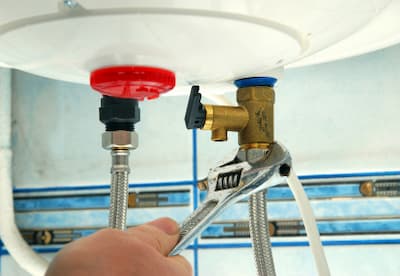Efficient Strategies for Maintaining Your Home's Hot Water System
Efficient Strategies for Maintaining Your Home's Hot Water System
Blog Article
How do you really feel about What Kind of Maintenance Do Water Heaters Need??

Hot water is vital for day-to-day comfort, whether it's for a rejuvenating shower or washing dishes. To guarantee your warm water system runs successfully and lasts longer, normal maintenance is essential. This short article provides sensible ideas and insights on how to keep your home's hot water system to stay clear of disturbances and costly repairs.
Intro
Maintaining your home's warm water system may seem overwhelming, however with a few basic steps, you can guarantee it operates efficiently for years ahead. This guide covers every little thing from comprehending your warm water system to DIY maintenance ideas and knowing when to employ professional assistance.
Importance of Maintaining Your Warm Water System
Regular maintenance not just extends the life expectancy of your warm water system but likewise guarantees it operates effectively. Disregarding maintenance can cause lowered efficiency, higher power bills, and even early failing of the system.
Signs Your Hot Water System Demands Upkeep
Understanding when your warm water system requires interest can protect against major problems. Watch out for indicators such as inconsistent water temperature, unusual sounds from the heating system, or rusty water.
Understanding Your Hot Water System
Before diving right into upkeep jobs, it's helpful to comprehend the fundamental parts of your warm water system. Normally, this includes the water heater itself, pipelines, anode poles, and temperature controls.
Regular Monthly Upkeep Tasks
Regular regular monthly checks can aid catch minor issues prior to they intensify.
Purging the Hot Water Heater
Purging your water heater removes sediment buildup, enhancing performance and lengthening its life.
Monitoring and Changing Anode Rods
Anode rods prevent corrosion inside the tank. Examining and replacing them when worn is vital.
Evaluating and Readjusting Temperature Level Setups
Adjusting the temperature settings ensures optimum performance and safety and security.
Do It Yourself Tips for Maintenance
You can do a number of maintenance tasks yourself to maintain your warm water system in leading problem.
Checking for Leaks
Frequently check pipes and connections for leakages, as these can bring about water damages and greater expenses.
Evaluating Pressure Relief Valves
Testing the pressure safety valve guarantees it works properly and avoids excessive stress build-up.
Protecting Pipes
Insulating hot water pipelines minimizes warm loss and can save energy.
When to Call a Specialist
While do it yourself maintenance is advantageous, some issues call for specialist competence.
Complicated Issues Calling For Expert Help
Instances consist of major leakages, electrical problems, or if your water heater is consistently underperforming.
Regular Expert Upkeep Perks
Professional upkeep can include thorough assessments, tune-ups, and guaranteeing conformity with security standards.
Final thought
Normal maintenance of your home's warm water system is vital for efficiency, long life, and cost financial savings. By complying with these ideas and knowing when to look for expert aid, you can make sure a trustworthy supply of warm water without unforeseen disruptions.
How to Maintain an Instant Hot Water Heater
Before tinkering with your hot water heater, make sure that it’s not powered on. You also have to turn off the main circuit breaker and shut off the main gas line to prevent accidents. Also turn off the water valves connected to your unit to prevent water from flowing into and out of the appliance. 2. When you’re done, you have to detach the purge valves’ caps. These look like the letter “T†and are situated on either side of the water valves. Doing so will release any pressure that has accumulated inside the valves while at the same time avoid hot water from shooting out and burning your skin. 3. When the purge valves’ caps are removed, you have to connect your hosing lines to the valves. Your unit should have come with three hoses but if it didn’t, you can purchase these things from any hardware or home repair shops. You can also get them from retail stores that sell water heating systems. Read the user’s manual and follow it to complete this task properly. When the hosing lines are connected, open the purge port’s valves. 4. You should never use harsh chemical cleaners or solutions when cleaning your unit. Make use of white vinegar instead. It should be undiluted and you’ll probably use about 2 gallons. 5. Now flush your water heater. This task should probably take about 40 minutes. We can’t give you specific directions for this because the procedure is carried out depending on the type, model and brand of your heater. With that being said, refer to the user’s manual. 6. When you’re done draining the unit, you have to turn off the purge port valves again. Remove the hosing lines that you earlier installed on each of the water valves. Put the valve caps (purge port) back in their respective places and be very careful so as not to damage the rubber discs that are found inside these caps. 7. Now that everything’s back in place, check your user’s manual again to find out how to reactivate your water heating system. 8. Once it is working, turn one of your hot water faucets on just to let air pass through the heater’s water supply pipes. Leave the tap on until water flows smoothly out of it. https://www.orrplumbing.com/blog/2014/september/how-to-maintain-an-instant-hot-water-heater/

I recently found that review on Tips on Maintaining a Water Heater when doing a search on the search engines. Do you know someone else who is excited about the topic? Feel free to share it. Thanks so much for taking the time to read it.
Quote Report this page